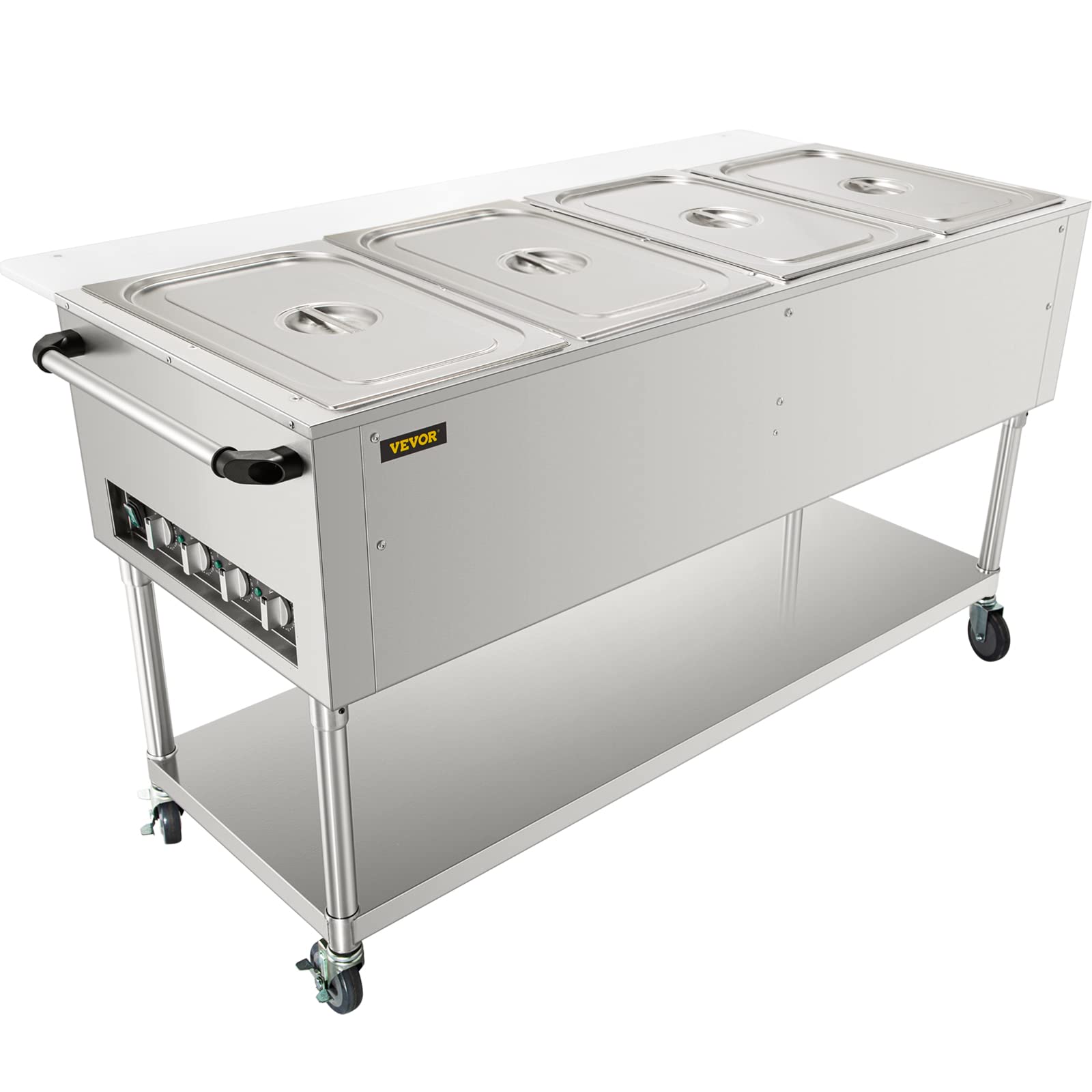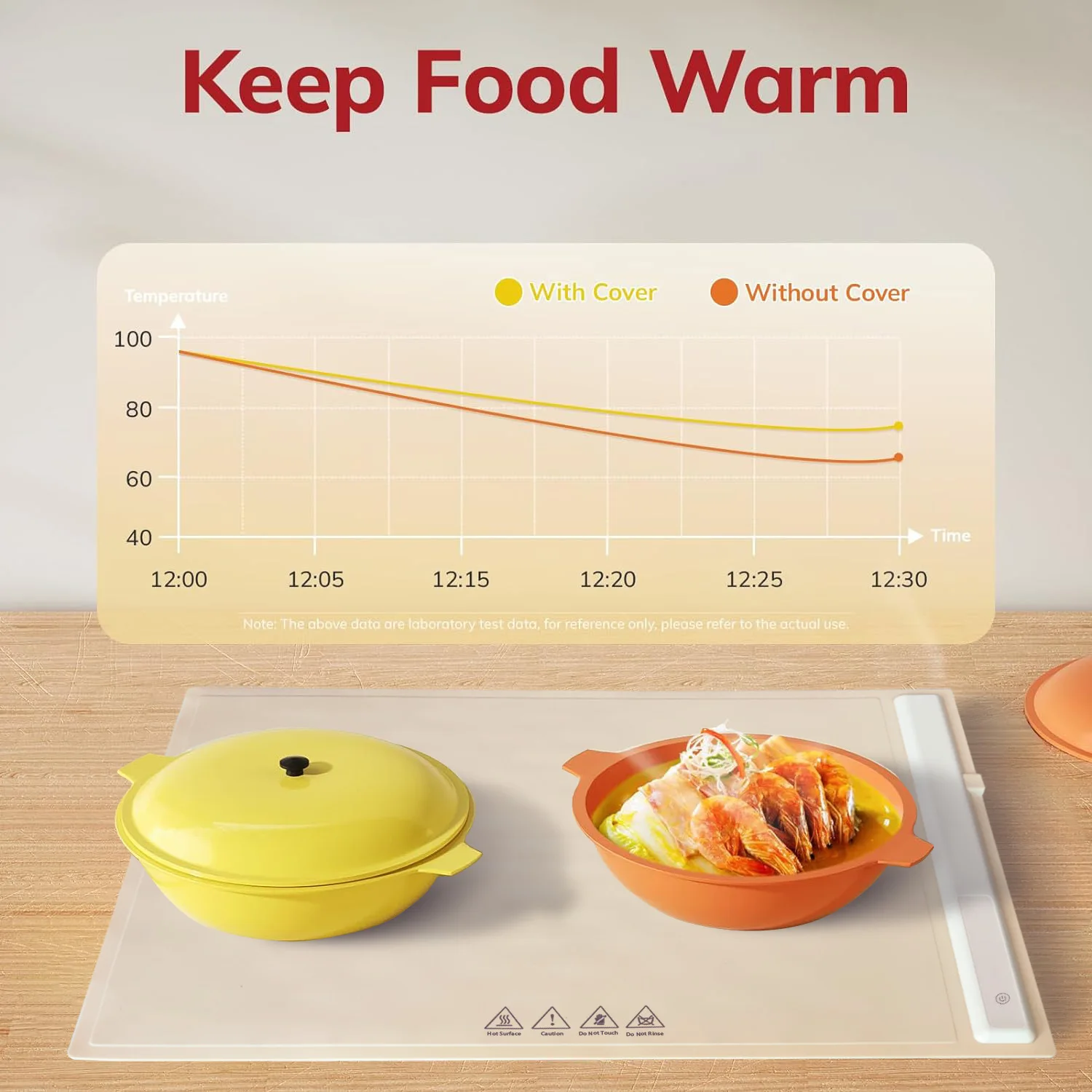Food warming mats are an essential tool for anyone who wants to keep their food hot and fresh. Whether you’re catering an event or simply trying to keep your dinner warm until everyone is at the table, a food warming mat can make all the difference.
In this guide, we’ll cover everything you need to know about food warming mats, from the different types available to the factors you should consider when choosing one. We’ll also provide some tips on how to care for your food warming mat so that it lasts for years to come.
Definition and Purpose: Food Warming Mat

A food warming mat is an electrical appliance designed to maintain the temperature of cooked food. It consists of a flat, heated surface that is placed under a plate or serving dish, providing gentle heat to keep food warm for an extended period.
Food warming mats are commonly used in restaurants, buffets, and other foodservice establishments to keep dishes at optimal serving temperatures. They are also becoming increasingly popular for home use, as they offer a convenient way to keep food warm during gatherings or while waiting for latecomers.
Types of Food Warming Mats
Food warming mats come in various types, each with unique features and materials to cater to specific needs. Here are some of the common types available in the market:
Electric Food Warming Mats
Electric food warming mats are powered by electricity and provide consistent heat to keep food warm for extended periods. They typically feature a heating element embedded within the mat, which is controlled by a thermostat to maintain the desired temperature.
These mats are often used in buffet settings, catering events, and restaurants.
Non-Electric Food Warming Mats
Non-electric food warming mats utilize heat retention materials, such as gel packs or insulated fabrics, to keep food warm. They are often used in situations where electricity is not available, such as picnics, camping, or car trips. These mats can be heated in a microwave or oven before use and then placed under the food to provide warmth.
Induction Food Warming Mats
Induction food warming mats use electromagnetic induction to generate heat directly in the cookware. This type of mat requires compatible cookware that is made of ferrous materials, such as cast iron or stainless steel. Induction food warming mats offer rapid heating and precise temperature control, making them suitable for professional kitchens and culinary applications.
USB-Powered Food Warming Mats
USB-powered food warming mats are portable and convenient options that can be powered by a USB port or power bank. They are often used in offices, schools, or on-the-go situations where access to electricity is limited. These mats typically have a smaller heating surface and are designed to keep individual portions of food warm.
Applications and Benefits

Food warming mats are widely used in various settings where maintaining the temperature of food is crucial.
One of the primary applications is in restaurants, where food warming mats help keep dishes warm and appetizing until they are served to customers. This is particularly important for buffets, where food needs to remain at an optimal temperature for extended periods.
Catering Events
Food warming mats are also indispensable for catering events, where keeping food warm during transportation and setup is essential. They ensure that dishes arrive at their destination at the desired temperature, ready to be served to guests.
Benefits of Using Food Warming Mats
The use of food warming mats offers numerous benefits, including:
- Maintaining Food Quality:Food warming mats prevent food from cooling down and becoming unappetizing. They maintain the ideal temperature for optimal taste and texture.
- Preventing Spoilage:By keeping food warm, food warming mats inhibit the growth of bacteria and prevent spoilage, ensuring the safety and quality of the food.
- Energy Efficiency:Food warming mats are energy-efficient compared to traditional heating methods. They consume less power while effectively maintaining the desired temperature.
Factors to Consider When Choosing a Food Warming Mat
Selecting the ideal food warming mat requires careful consideration of several key factors. These factors influence the effectiveness, practicality, and durability of the mat, ensuring it meets your specific needs and preferences.
Essential factors to consider include:
Size
The size of the food warming mat should correspond to the amount of food you typically warm. A mat that is too small may not accommodate all your dishes, while an excessively large mat may take up unnecessary counter space.
Consider the size of your dishes and the number of items you usually warm at once to determine the appropriate mat size.
Temperature Range
Food warming mats vary in their temperature range, typically offering settings from low to high. Determine the temperature range that best suits your needs. If you frequently warm delicate foods, a mat with a lower temperature range is preferable to prevent overcooking or burning.
For faster warming or heating larger quantities of food, a mat with a higher temperature range is more suitable.
Durability, Food warming mat
The durability of the food warming mat is crucial for long-term use. Consider the material and construction of the mat. High-quality materials, such as silicone or heat-resistant fabrics, ensure durability and resistance to wear and tear. A sturdy and well-made mat will withstand regular use and provide reliable performance over time.
Maintenance and Care
Ensuring the longevity of your food warming mats requires proper maintenance and care. By adhering to the following techniques, you can extend the lifespan and functionality of these essential kitchen appliances.
To clean your food warming mats, unplug them and allow them to cool completely. Use a damp cloth with a mild detergent solution to wipe down the surface, avoiding any abrasive cleaners or scouring pads. Rinse thoroughly with a clean, damp cloth and allow to air dry before storing.
Storage
When not in use, store your food warming mats in a cool, dry place away from direct sunlight or heat sources. Avoid folding or bending the mats, as this can damage the heating elements. It is recommended to store the mats flat or rolled up loosely.
Design Considerations
When selecting a food warming mat, it’s essential to consider several design factors that influence its functionality and suitability for your specific needs.
The following table Artikels key design considerations to help you make an informed choice:
Shape
- Rectangular:Versatile shape, suitable for most serving platters and dishes.
- Oval:Elongated shape, ideal for warming large roasts or casseroles.
- Round:Compact shape, perfect for warming individual plates or small dishes.
Size
- Small:Suitable for warming small dishes or individual portions.
- Medium:Ideal for warming larger dishes or multiple plates.
- Large:Capable of accommodating large platters or serving trays.
Materials
- Silicone:Flexible and heat-resistant, easy to clean and store.
- Ceramic:Durable and heat-retaining, suitable for warming food for extended periods.
- Fabric:Insulated and portable, ideal for warming food on the go.
Market Trends and Innovations

The food warming mat industry is constantly evolving, with new technologies and advancements emerging to meet the changing needs of consumers and businesses. One of the most significant trends is the increasing demand for energy-efficient and environmentally friendly products. Consumers are becoming more conscious of their environmental impact, and they are looking for products that can help them reduce their energy consumption.
Another major trend is the growing popularity of smart home devices. Smart food warming mats can be controlled with a smartphone or tablet, making it easy to adjust the temperature and monitor the progress of your food. These devices also offer a variety of features, such as automatic shut-off and temperature control, that make them more convenient and user-friendly.
New Technologies and Advancements
Some of the new technologies and advancements that are shaping the food warming mat industry include:
- Thermoelectric technology:Thermoelectric technology uses the Peltier effect to generate heat or cold. This technology is energy-efficient and can be used to create food warming mats that are thin and lightweight.
- Graphene heating elements:Graphene heating elements are made of a thin layer of carbon atoms. These elements are very efficient at conducting heat, and they can be used to create food warming mats that heat up quickly and evenly.
- Wireless charging:Wireless charging allows food warming mats to be charged without the need for a cord. This makes them more convenient and portable.
Case Studies and Examples
Food warming mats have revolutionized the way food is served and enjoyed in various settings. Here are a few case studies that demonstrate their impact on food quality and customer satisfaction:
Restaurants and Caterers
- A popular restaurant chain implemented food warming mats in its buffet area to keep dishes at optimal temperatures. The result was a significant improvement in food quality, reduced waste, and increased customer satisfaction.
- A renowned catering company used food warming mats to maintain the freshness and warmth of appetizers and desserts during a large-scale event. The mats allowed guests to enjoy hot and flavorful dishes throughout the evening.
Healthcare Facilities
- A hospital implemented food warming mats in its patient rooms to ensure that meals are served at a safe and appetizing temperature. The mats reduced the risk of foodborne illnesses and improved patient satisfaction.
- A nursing home used food warming mats to keep meals warm for residents who have difficulty eating quickly. The mats allowed residents to enjoy their meals at their own pace without the food getting cold.
Home Use
- A family with young children found food warming mats to be a lifesaver. The mats kept food warm for busy parents who needed to feed their children at different times.
- An elderly couple used food warming mats to keep their meals warm while they enjoyed their evening walk. The mats allowed them to return home to a hot and satisfying meal.
FAQ Corner
What are the different types of food warming mats?
There are two main types of food warming mats: electric and non-electric. Electric food warming mats use a heating element to warm food, while non-electric food warming mats use a heat-conducting material to transfer heat from a heat source to the food.
What are the benefits of using a food warming mat?
Food warming mats offer a number of benefits, including:
- Keeping food hot and fresh
- Preventing food from drying out
- Reducing the risk of foodborne illness
- Making it easier to serve food
How do I choose the right food warming mat?
When choosing a food warming mat, there are a few factors to consider, including:
- The size of the mat
- The type of food you will be warming
- The temperature range of the mat
- The durability of the mat
